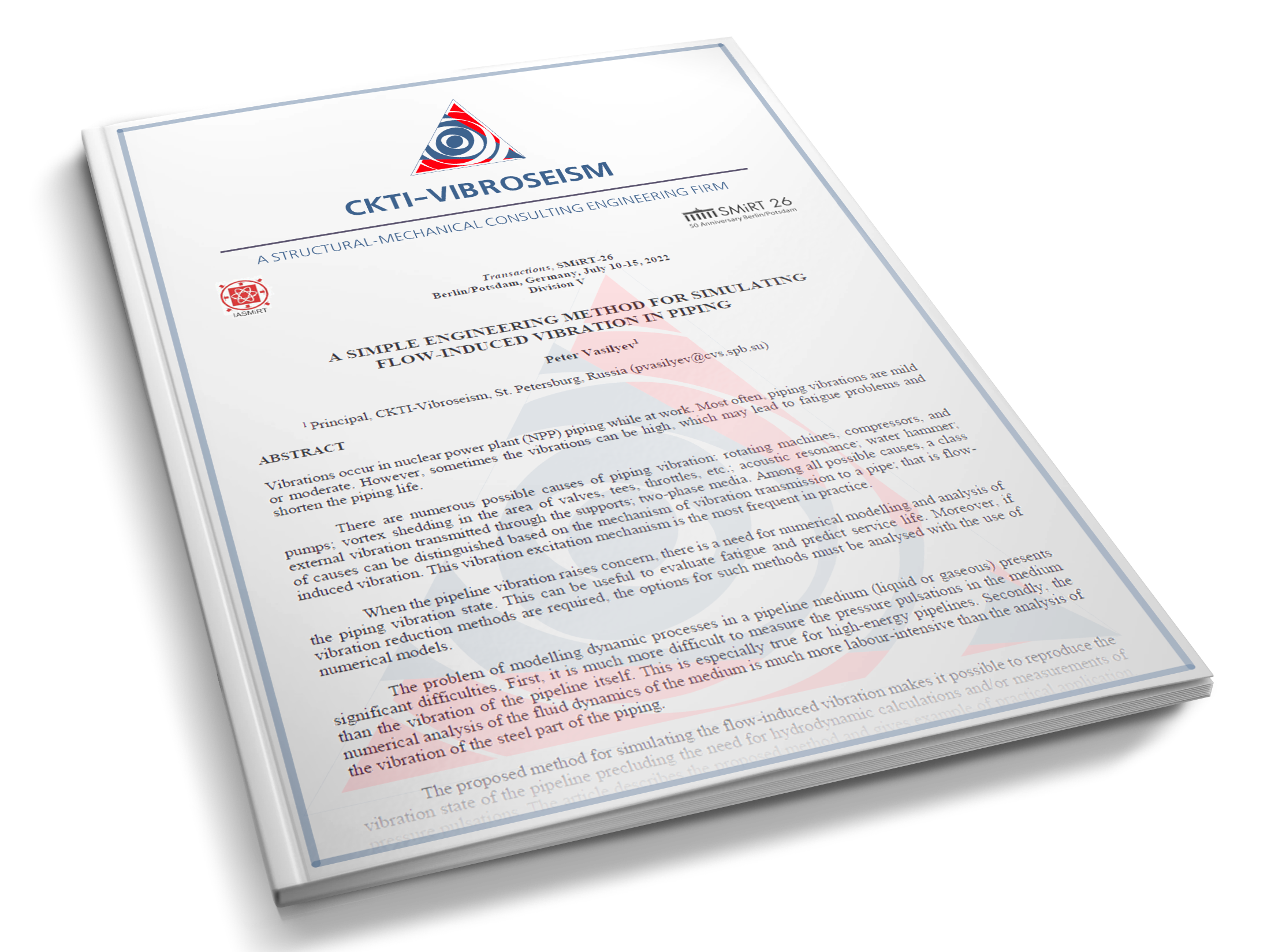A SIMPLE ENGINEERING METHOD FOR SIMULATING FLOW-INDUCED VIBRATION IN PIPING
Transactions, SMiRT-26, Division V. Berlin/Potsdam, Germany, July 10-15, 2022

- Авторы: : Васильев П.С. [Peter S. Vasilyev]
- Редактор: English
- №: 46
- Библиотека: Conference Papers
- Год: 2022
- Файл: we3f3
Просмотры: 2732
Vibrations occur in nuclear power plant (NPP) piping while at work. Most often, piping vibrations are mild or moderate. However, sometimes the vibrations can be high, which may lead to fatigue problems and shorten the piping life.
There are numerous possible causes of piping vibration: rotating machines, compressors, and pumps; vortex shedding in the area of valves, tees, throttles, etc.; acoustic resonance; water hammer; external vibration transmitted through the supports; two-phase media. Among all possible causes, a class of causes can be distinguished based on the mechanism of vibration transmission to a pipe; that is flow-induced vibration. This vibration excitation mechanism is the most frequent in practice.
When the pipeline vibration raises concern, there is a need for numerical modelling and analysis of the piping vibration state. This can be useful to evaluate fatigue and predict service life. Moreover, if vibration reduction methods are required, the options for such methods must be analysed with the use of numerical models.
The problem of modelling dynamic processes in a pipeline medium (liquid or gaseous) presents significant difficulties. First, it is much more difficult to measure the pressure pulsations in the medium than the vibration of the pipeline itself. This is especially true for high-energy pipelines. Secondly, the numerical analysis of the fluid dynamics of the medium is much more labour-intensive than the analysis of the vibration of the steel part of the piping.
The proposed method for simulating the flow-induced vibration makes it possible to reproduce the vibration state of the pipeline precluding the need for hydrodynamic calculations and/or measurements of pressure pulsations. The article describes the proposed method and gives example of practical application.
 ООО «ЦКТИ-Вибросейсм»
ООО «ЦКТИ-Вибросейсм» 
